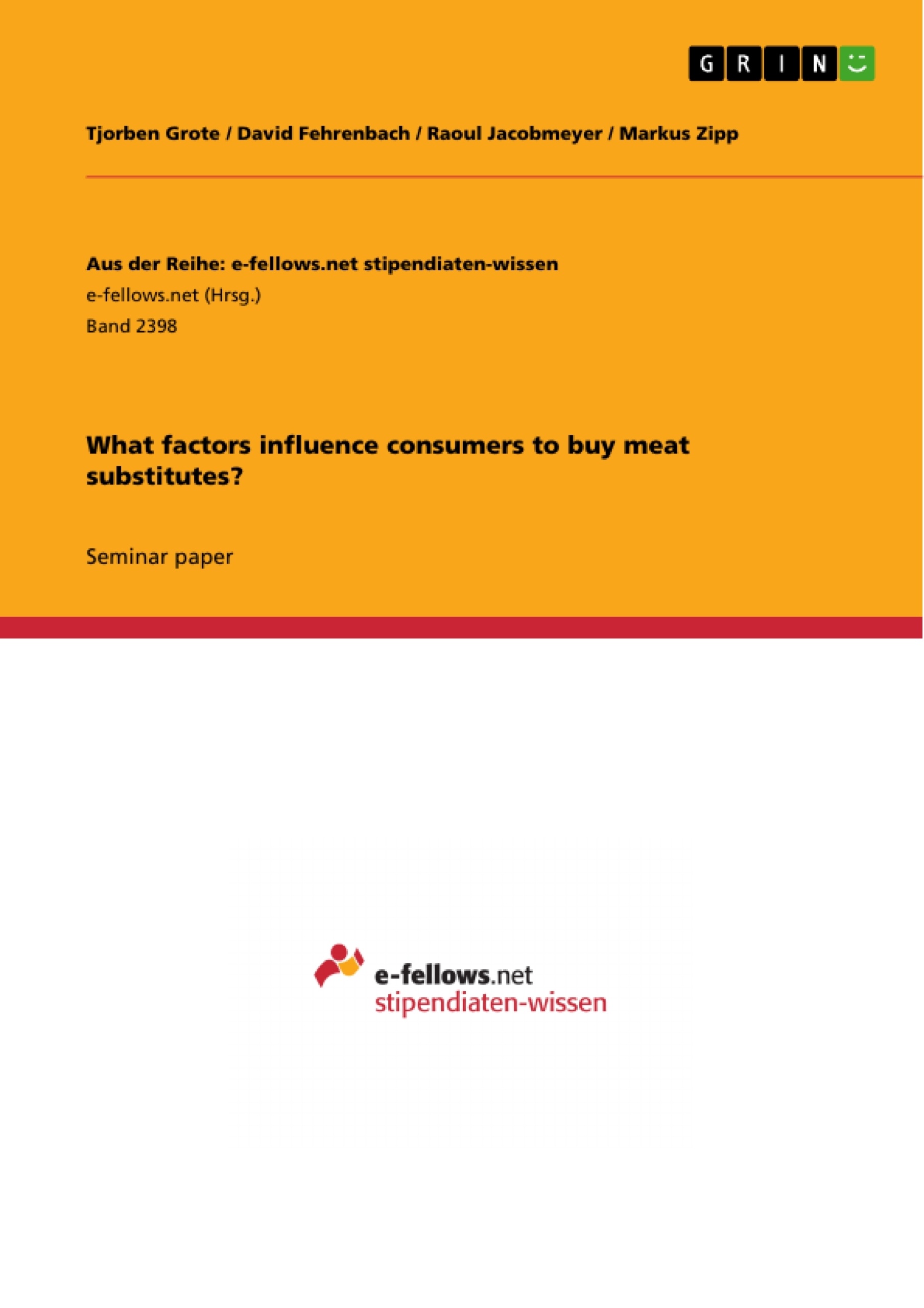What factors influence consumers to buy fake meat products? In this exploratory research the authors aim at identifying a variety of factors that explain why consumers buy fake meat products, which have been on the rise in the past years in Germany. The authors follow a split approach in form of one quantitaive (regression analysis) and one qualitative (means-end chain) study to gain insights.
Inhaltsverzeichnis (Table of Contents)
- Introduction
- Research Design
- Literature Review
- Derivation of the Research Design
- Expert Interviews
- Study One
- Hypotheses Derivation
- Conceptual Model
- Data Collection and Sample Description
- Questionnaire Design
- Data Preparation
- Definition of Dependent and Independent Variables
- Control Variables
- Factor Analysis
- Socio-demographics
- Scenario Analysis
- Research Design
- Methodology
- Results
- Hierarchical Linear Regression Analysis
- Research Design
- Methodology
- Results
- Study Two
- Means-end Chain Theory
- Introduction
- Assumptions of the Means-end Chain
- Means-end Chain Design
- Laddering
- Means-end Chain Survey
- Questionnaire Design
- Means-end Chain Methodology
- Derivation of Factors
- Results
- Means-end Chain Theory
- Implications
- Limitations and Further Research
Zielsetzung und Themenschwerpunkte (Objectives and Key Themes)
This seminar paper aims to investigate the factors influencing consumers to purchase meat substitutes. The study explores the motivations behind this choice, analyzing consumer behavior and perceptions related to meat substitutes.
- Consumer preferences and attitudes towards meat substitutes
- Factors influencing purchase decisions regarding meat substitutes
- The role of health, ethical, and environmental concerns in consumer choices
- Exploring the impact of marketing strategies on consumer perceptions of meat substitutes
- Identifying potential areas for future research and development within the meat substitute market
Zusammenfassung der Kapitel (Chapter Summaries)
The introduction provides an overview of the research topic, outlining the significance of understanding consumer behavior towards meat substitutes. It sets the stage for the subsequent chapters, which delve into the research design, methodology, and findings.
The research design chapter details the chosen approach for investigating consumer preferences. This includes a review of existing literature on the topic, the derivation of the research design, and a description of the expert interviews conducted.
Study One presents a comprehensive analysis of consumer behavior using a quantitative approach. It outlines the hypotheses, conceptual model, data collection methods, and the results of the hierarchical linear regression analysis. This study explores the factors influencing consumer decisions regarding meat substitutes, considering various variables like health concerns, environmental impact, and price.
Study Two focuses on a qualitative approach, employing the means-end chain theory to understand the underlying motivations and values driving consumer preferences for meat substitutes. The chapter details the methodology, questionnaire design, and the results of the laddering technique used to uncover consumer perceptions.
The implications chapter summarizes the key findings of both studies, drawing connections between the quantitative and qualitative results. This section highlights the insights gained into consumer behavior and their implications for marketing and product development.
The final chapter addresses the limitations of the research and proposes areas for future research. It acknowledges potential biases and shortcomings, suggesting directions for further exploration of the topic.
Schlüsselwörter (Keywords)
This research focuses on the factors influencing consumer choices regarding meat substitutes. Key themes include consumer behavior, health concerns, environmental impact, ethical considerations, marketing strategies, and the means-end chain theory. The study utilizes quantitative and qualitative methodologies to explore the motivations and perceptions driving consumer decisions.
- Citar trabajo
- B. Sc. Tjorben Grote (Autor), David Fehrenbach (Autor), Raoul Jacobmeyer (Autor), Markus Zipp (Autor), 2016, What factors influence consumers to buy meat substitutes?, Múnich, GRIN Verlag, https://www.grin.com/document/369663



